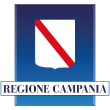The Campania Region is kicking off its week at the ‘Italy Pavilion’ of the Osaka Expo. With the ribbon cutting by the Head of Delegation, the Councillor for Agriculture Nicola Caputo and Ambassador Mario Vattani, the exhibition area dedicated to the Region was inaugurated.
On the theme of R-Innovation, tradition and innovation at the service of sustainable development, the Campania Region, starting from the Digital Ecosystem for Culture, carried out with the financial support of European Cohesion Policy, developed the ‘Fire and Memory’ project, with the aim of telling, through a scenic exhibition, the link between volcanic activity and the development of ancient cultures, with particular attention to Vesuvius, the Phlegraean Fields and the archaeological sites of Pompeii, Herculaneum and Cumae. Archaeology, in this context, becomes a bridge between past and present, between destruction, R-Inascita and R-Esilienza. Every recovered find, every restored fresco, every road brought to light is an act of R-Existence against oblivion, a gesture of care for what nature has hidden but not erased. Through the resources of European programming, the Campania Region has invested in urban and environmental redevelopment, in the development and strengthening of monitoring systems and in tourism enhancement, of the volcanic areas of Campania. Interventions that aim to limit the risks and to renew the development of territories that have made coexistence with the power of the volcano an identity, spiritual and cultural element deeply rooted in the population. Campania and Japan are thus united by an invisible bond of fire, resilience and beauty, which tells of man’s ability to live in harmony with a powerful and unpredictable nature.

In the niches, however, Campania highlights achievements and productions, under the banner of enhancing innovation and sustainability, including through the representation of digitalisation pathways, rediscovery and enhancement of the traditions of Campania, through some operations financed by the Campania ERDF Programme also in the field of the Smart Specialisation Strategy of the Campania Region (S3) in the context of the innovation ecosystems S3 Campania MODA, MADE IN ITALY AND DESIGN – AGRIFOOD, AGRITECH – CULTURAL GOODS, TOURISM AND CREATIVE INDUSTRY. Three niches focus on enhancing the digitisation of Campania’s cultural heritage. Cultural heritage, with small objects and works representative of the ceramic traditions of Campania made by the School of Ceramics Caselli Institute of Capodimonte. Tourism and the creative industry, with demonstrations of craftsmanship related to crib art. Enabling technologies for the use of sound content from the SoNa portal – a section of the ecosystem dedicated to Neapolitan music.

The fourth niche is focused on fashion, Made in Italy, with the exhibition of advanced materials and nanotechnologies with clothes and jewelry made with an innovative cellulose fiber material generated without cutting down trees. Also in this niche are proposed gloves made as part of the activities of the Experimental Station for the leather and tanning materials industry based in Pozzuoli. Crafts 4.0, Design and Made in Italy for the fifth niche, where there are some demonstration models made by the Centre for Digital Crafts, while the sixth has pizza as its main theme, with a focus on the use of blockchain for the creation of the ‘Pizza Campana’ and innovative experiments on the subject. But Campania is not only food and wine and landscape. For this reason, in the week dedicated to her, the collective mission of Campanian companies operating in the sectors of excellence in aerospace, automotive, precision mechanics, logistics, fashion, leather goods and fashion accessories will also be presented.

During the first day, in a conference dedicated to the Digital Ecosystem for Culture of Campania, the director of the Italian Pavilion, Andrea Marin expressed satisfaction with the presence of Campania, which, with its set-up and its calendar of meetings, perfectly understood the spirit of the Expo and the usefulness of this participation. In other words, Marin said, ‘Communicating Campania’s positioning vis-à-vis Japan, encouraging training meetings and doing business, Campania has completely centred the spirit of this participation’.

At the remotely connected meeting, the Director-General for Cultural Policies and Tourism of the Campania Region, Rosanna Romana (disambiguation) explained to the audience the functioning of the Digital Ecosystem for Culture of Campania. A great moment of promotion for Campania that, thanks to this online ecosystem that collects many artistic works and places in Campania, allows you to consult resources and schedule visits. Romano invited the audience to use the viewers present at the Italian Pavilion to immerse themselves in the Campanian heritage, the headphones to listen to Neapolitan music stored in the portal and the multimedia kiosk where the ecosystem can be navigated. All these resources are part of the set-up at the Italian Pavilion.
Before her, always connected remotely, the Councillor at the Tourism in Casucci It retraced the history of friendship between the Campania region and Japan and the points of contact between the two realities.





